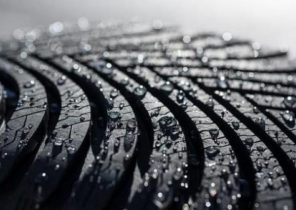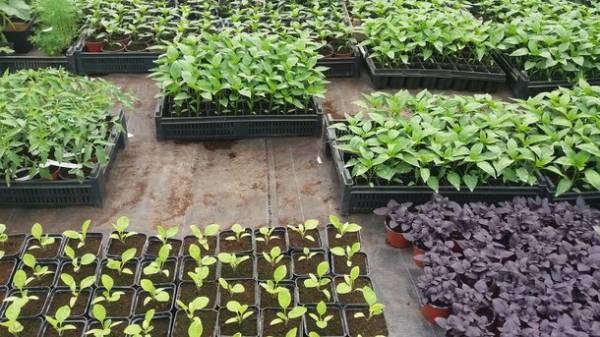
Growing seedlings — a long and laborious process. And how sad it is the gardener, when carefully cultivated culture when landing in open ground hurts and poorly rooted. To ensure that the seedlings are well established in a new place, you need to ensure the development of plants have a strong root system and the balance of the aboveground and underground parts. How to avoid problems with planting the seedlings, he told us the owner of the company “Miller’s Garden” Alexander Melnik, candidate of biological Sciences, agronomist Dmitry Maydanyuk.
EVERYTHING FOR GROWTH: FEEDING
Young plants to ensure optimal nutrition area (for cabbage — not less than 5×5 cm, for tomatoes — 8×8 cm), regular fertilizing complex fertilizers with a high proportion of phosphorus and potassium. The classic mixture for fertilizing is a solution of 5-10 g of ammonium nitrate, 30 to 40 g of double superphosphate (dissolve it in hot water!), 10-15 g of potassium chloride. This solution is fed seedlings of solanaceous crops (tomato, eggplant, peppers) and cabbage, 2-3 times during seedling period.
But it is better to use a modern compound fertilizers with a high proportion of phosphorus, especially at the beginning and at the end of the planting period. Seedlings that receive sufficient phosphorus, potassium and trace elements, develops a strong root system and is easier to transplant than the seedlings that were fed exclusively on nitrogen fertilizer.
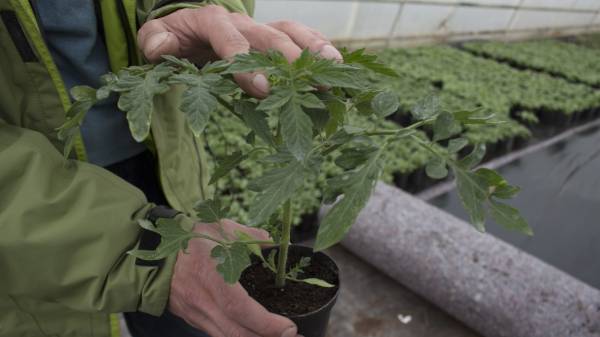
Optimal nutrition area
ON OPEN GROUND
The conditions in the room, a greenhouse or a greenhouse are significantly different from those with which our plants will encounter in the open ground. Therefore, the careful grower promptly begins to accustom the seedlings to bright sun, wind, and temperature fluctuations. Tempering start 2-3 weeks before planting in the ground. Initially, the boxes with the plants tolerate partial shade (or pritenyayut their AGROSALON) in the open air for 2-3 hours on a warm Sunny day. Urban gardeners, in this case, can use the balcony or loggia. The next day, the time of hardening can be increased to 3-4 hours, then 5-6. Gradually remove the shading. After 7-8 days the seedlings can even spend the night outside, if not expected frosts or cold snaps. Accustomed to the fluctuations in day and night temperatures, the seedlings are much easier to tolerate the transplant. But it is not necessary to expose the plants to bright sun immediately, especially after watering, transplanting and picking.
During the preparation of seedlings for planting stop fertilizing with organic fertilizers (humates in addition, stimulating root development), reduce the proportion of nitrogen in mineral dressing. Strengthens supportive tissue of plants, fertilizing with calcium nitrate or mixture “Brexil-calcium” for 7-10 days before planting. Gradually reduce irrigation, drying with the root ball. Before planting the seedlings lightly watered in to the root ball out of the pot without breaking down.
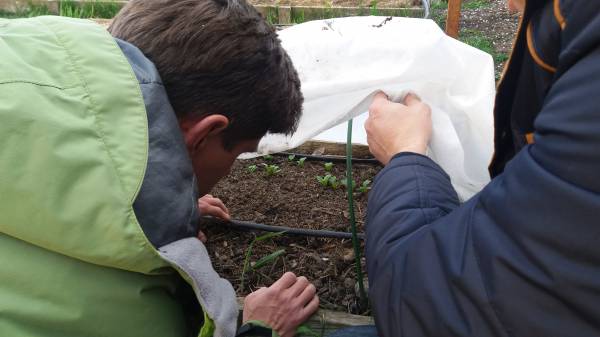
Hardening. This seedling is much easier to transplant
DIFFERENT DRUGS: THE TERMS OF USE
It is optimal to feed the seedlings in the early morning or late evening to avoid burning plants. For supplements maximum effect it is necessary to provide plants with the right conditions of temperature, lighting and irrigation. Only in this case, they can easily, quickly and completely absorb made nutrients.
The use of stimulants improves the seedlings after transplanting
THE GROWTH REGULATORS. Today, the use of growth regulators for fertilizing seedlings is a widely common technique. 1-2 competent use of such stimulants can significantly improve the condition of the plants after planting, frost. Hardening of seedlings is also much easier, to use such drugs. Another area of application of growth promoters is the inhibition of developing and extending seedlings: after treatment inhibited growth, thickens the stem, plants are easier to tolerate conditions of low light. This treatment can accelerate flowering and fruiting. But be careful: the use of such stimulants, particularly multiple, can disrupt the natural development of plants. This affects their growth and yield.
Feeding starts with the appearance of first true leaf and stop for 5-7 days before planting. Fertilizers with high nitrogen content should be used only in the middle of the planting period. Optimum is the alternation of root and foliar feeding with a weak solution of fertilizer. Significantly higher results were observed when fertilizing the seedlings every 5-7 days, half-doses of water soluble complex fertilizers.
To stimulate root growth is optimal in the alternation of the feeding of seedlings with mineral fertilizers and solutions of humates, fulvates, cultures of microorganisms, such as Baikal, Trichoderma, fitosporin. Improving the condition of the soil in the pots, inhibiting the development of pathogens, they compensate the negative influence of mineral fertilizers on the plants and soil.
THE SUBTLETIES OF THE PLANTS
With the most careful transplant even freshly dug seedlings, but with an open root system loses a significant part of the roots. This leads to the wilting of plants, growth inhibition, delay the timing of the receipt of the fruit, and the harvest is threatened. “However, this is never observed when planting seedlings with closed root system”, — shared the experience of Alexander Miller.
Seedlings with closed roots, grown in pots or magazines, “notices” and the transplant immediately after planting is making a strong push. In addition, in this case hold all the plants. Sometimes to grow crops with vulnerable root system intolerant for transplanting, use peat pots, planting the plant into the soil along with it. But be careful that the roots were unable to penetrate its walls. Therefore, before planting capacity enough to moisturize, and its walls are cut or torn.
If the seedling is planted out of the box, it is possible to damage the root system and try to gently move the plant into the hole with the root ball. Market the seedlings with open root system survives much worse. And the longer she was in such a state, the higher the probability of plant death and the longer you will have to recover survivors.
AGE AND CONDITIONS. Of course, the best option is transplanting the optimal age and optimal conditions. But rooting for the best troubled plants makes sense to use stimulants. The traditional measure, which helps the plants to transfer the stress, is treatment with drugs such as “Appin”, “Zircon”, “Megavol”. These hormones trigger active cell division and plant growth. For better rooting makes sense for a few days before planting to water the seedlings drugs-corticelli — “Carnevino”, “IAA”, “Radiopharma”. Stimulating the growth of roots, they help the seedling to quickly adapt in a new place. Also a great uhrenatelier is the potassium HUMATE solution.
However, it should be understood that the use of corticella and stimulants during the landing will not replace proper preparation of the plants. The end of April — beginning of may is a perfect moment for her to start.
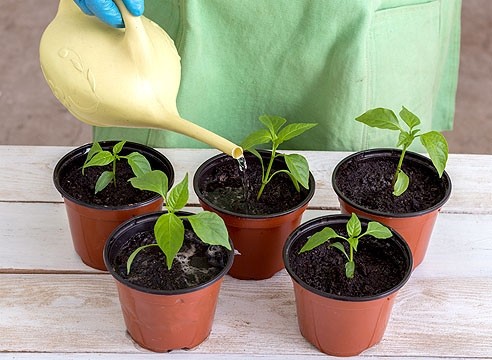
An indoor root. Such seedlings “notices” transplant
